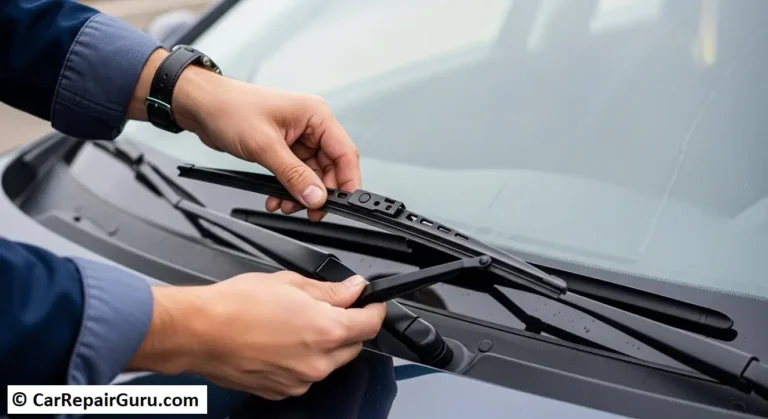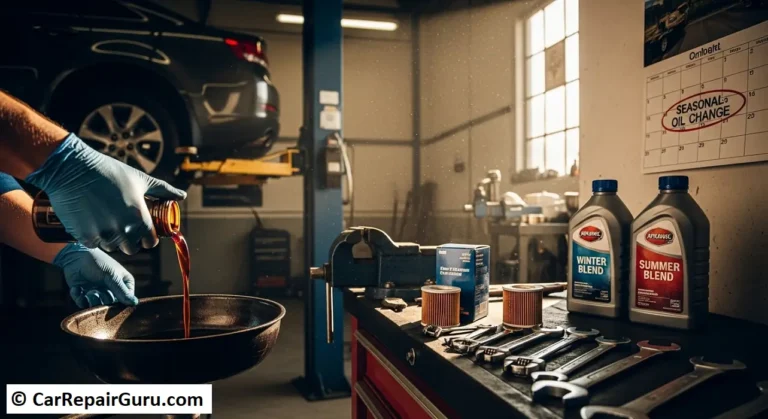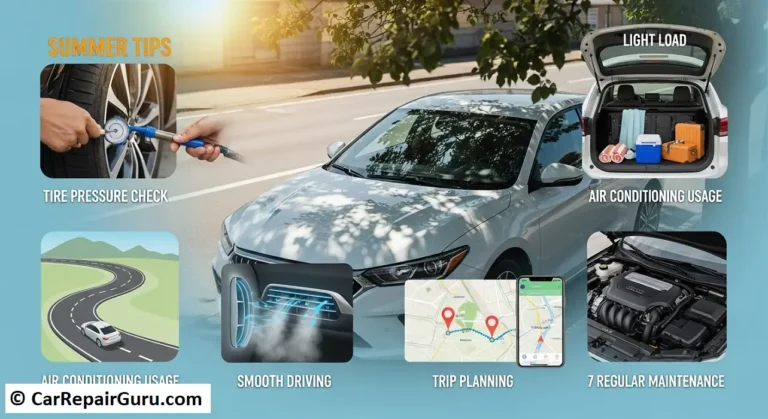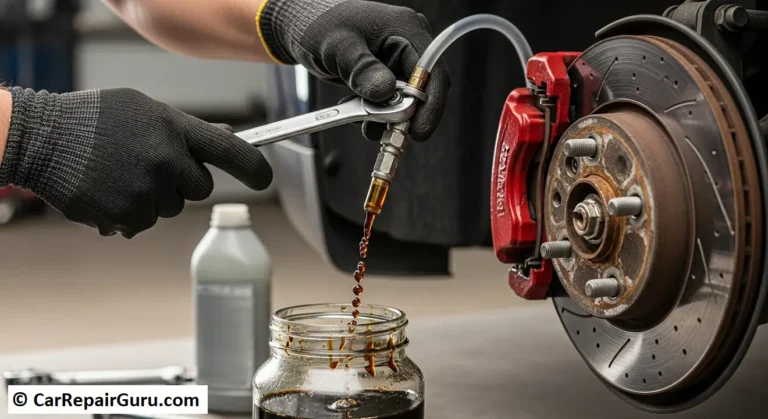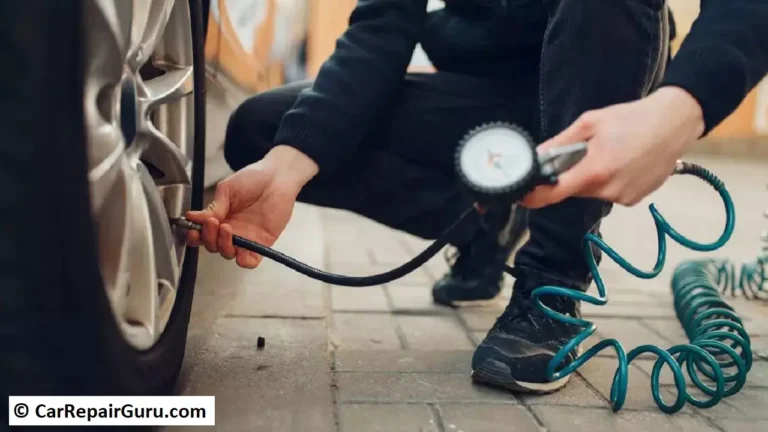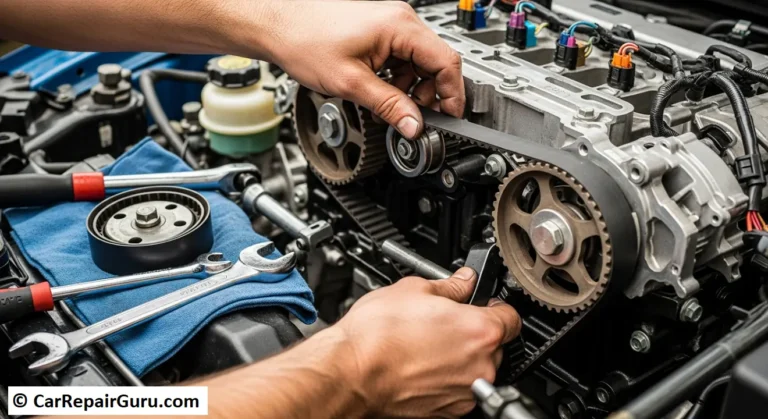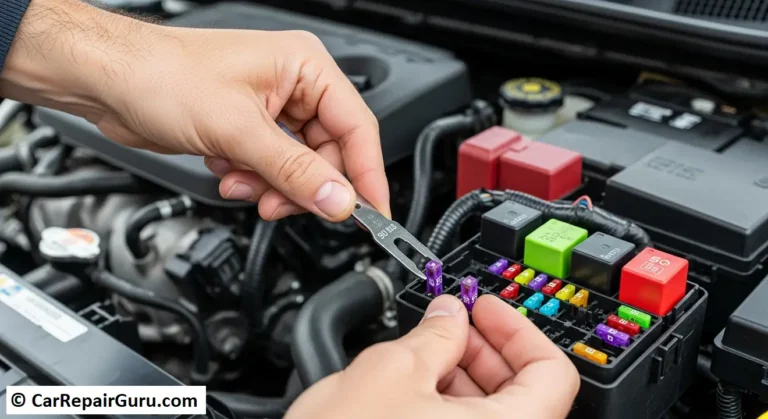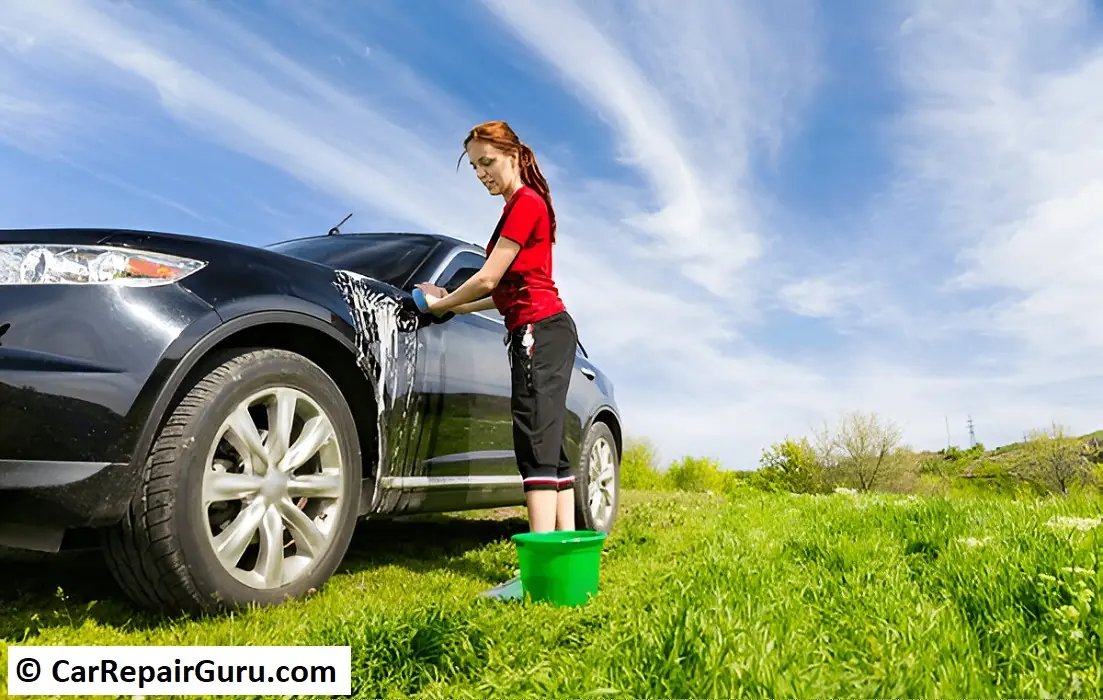
After months of battling snow, salt, and freezing temperatures, your car deserves some serious TLC. Spring car maintenance isn’t just a seasonal chore — it’s your chance to undo winter’s wear and tear and get your vehicle ready for smoother, safer drives in warmer weather.
Think of spring as your car’s reset button. A thorough car spring checkup helps catch small issues before they become expensive problems down the road. From worn-out wiper blades and dirty filters to low fluid levels and rusty undercarriages, the cold season leaves its mark in more ways than one.
This guide walks you through a complete seasonal car maintenance checklist. Whether you want to rotate your tires, top off fluids, or deep clean your interior, each section is packed with practical, easy-to-follow tips. So grab your gloves and let’s get your car back in top shape — ready to roll into spring and beyond.
Inspect and Rotate Tires
Your tires are your car’s only contact with the road — so giving them attention during your spring auto care routine is a must. After enduring winter’s potholes, icy roads, and temperature swings, your tires could be underinflated, unevenly worn, or even damaged without you realizing it.
Start your vehicle inspection by checking the tire pressure. Cold air causes tire pressure to drop, and even when temps rise, they don’t always bounce back on their own. Refer to your owner’s manual or the sticker inside your driver’s door for the correct PSI. Driving with low tire pressure can affect handling, reduce fuel efficiency, and increase wear.
Next, inspect the tread depth. A simple penny test can tell you whether you still have safe traction — especially important for those sudden spring downpours. Don’t forget to check for visible signs of damage like cracks, bulges, or embedded debris.
One of the most overlooked but essential steps in spring car maintenance is a tire rotation. Winter driving can create uneven wear patterns, especially if you drive a front- or rear-wheel-drive vehicle. Rotating your tires promotes even wear, extends their life, and helps improve ride quality.
Consider getting a wheel alignment while you’re at it. If your steering feels off or the car pulls slightly to one side, misalignment could be the culprit. Proper alignment ensures your tires wear evenly and your car stays stable on the road.
Check and Top Off Car Fluids
Fluids are like the lifeblood of your vehicle, and after a long, cold winter, it’s time to check that everything is flowing smoothly. As part of your post-winter car care, inspecting and topping off fluids can prevent engine damage, overheating, and unexpected breakdowns.
Start with the engine oil — it’s one of the most critical fluids for keeping your engine running efficiently. Pull out the dipstick when the engine is cool, wipe it clean, reinsert it, then pull it out again to check the level and color. If the oil looks dirty or low, it’s time for a change.
Next up is coolant, which helps regulate your engine’s temperature. Look at the reservoir (not the radiator!) and ensure the fluid level sits between the minimum and maximum lines. Don’t forget to inspect transmission fluid if your vehicle allows it — it should be a bright red or pink, not brown or burnt-smelling.
Brake fluid often gets overlooked but is essential for safe stopping. If it’s dark or cloudy, flush and replace it. And let’s not forget windshield washer fluid — vital for clear vision during muddy spring drives.
Not sure where to begin? Learning how to check car fluids at home is easier than it sounds — your owner’s manual is your best friend, and most reservoirs are labeled clearly under the hood.
Keeping an eye on these fluids is a small task that goes a long way in maintaining your car’s health and performance throughout the spring.
Replace Windshield Wiper Blades

One of the simplest yet most overlooked car maintenance tips is replacing your windshield wiper blades — especially after winter. Snow, ice, and freezing temperatures can wear down the rubber, making them brittle and less effective. By spring, they’re often cracked, streaking, or just plain noisy.
So, how do you know it’s time to change wiper blades? If your blades leave streaks, skip spots, or squeak across the windshield, they’re overdue for a swap. You might also notice the rubber peeling away from the frame — another clear sign they’ve reached the end of their life.
Choosing the right blades for spring is all about prepping for rainy days ahead. Look for quality rubber or silicone blades designed to handle heavy rain and consistent use. Some even come with built-in spoilers to improve performance at higher speeds.
It’s a quick, affordable fix — and one that can dramatically improve visibility and driving safety.
Test the Car Battery
Winter can be brutal on your battery. Freezing temps slow down the chemical reactions inside, which means even a healthy battery can lose power fast. That’s why one key part of spring car maintenance is giving your battery a proper checkup.
If your engine cranks slowly, your headlights dim when idling, or you’ve noticed electrical glitches, these are all warning signs of car battery problems after winter. The last thing you want is to get stranded on the first warm weekend road trip.
The good news? You don’t have to be a mechanic to run a battery test. Many auto parts stores will check it for free, or you can use a multimeter at home. A healthy battery should read around 12.6 volts when the engine is off.
Make sure the terminals are clean and corrosion-free, and check the age — if it’s over three years old, consider replacing it to avoid unexpected failures in the warmer months.
Inspect Your Brakes
Winter doesn’t just challenge your driving skills — it also puts serious stress on your brake system. Road salt, slush, and constant temperature shifts can cause corrosion and wear, making spring the perfect time for a brake inspection.
Braking performance can decline gradually, so it’s easy to miss the early signs. But ignoring your brakes could put your safety (and your wallet) at risk. If you hear squealing, grinding, or feel vibration when braking, it’s time to check those pads and rotors. These are telltale signs your car needs a spring tune-up.
Start with a visual inspection if you’re comfortable. Look through the wheel spokes to check pad thickness — anything less than 1/4 inch means it’s time to replace them. Rust on rotors, uneven wear, or deep grooves are also red flags. And if your brake pedal feels soft or spongy, that could point to air in the brake lines or a fluid issue.
Even if everything seems fine, it’s a smart move to get a professional brake inspection as part of your spring car maintenance. A certified mechanic can catch issues you might overlook, and regular maintenance extends the lifespan of your braking system.
Your brakes are your first line of defense on the road — don’t take them for granted. A little attention now can go a long way in keeping you and your passengers safe through spring and beyond.
Replace Air Filters (Engine + Cabin)
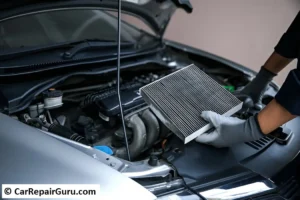
Spring is the season of fresh air — and your car deserves to breathe clean, too. As part of your car spring checkup, replacing both your cabin air filter and engine air filter can make a noticeable difference in performance and comfort.
A clogged cabin air filter restricts airflow through your ventilation system, making it harder to cool or heat the cabin. Worse, it can trap pollen, dust, and other allergens — something you definitely don’t want during allergy season. Most manufacturers recommend replacing it every 12,000–15,000 miles or once a year.
The engine air filter, on the other hand, directly impacts fuel efficiency and engine health. A dirty filter forces your car to work harder, reducing power and increasing fuel consumption. During an engine check, this is one of the first things to assess.
The best part? Filter replacement is usually a quick DIY task. No tools needed — just pop open the housing, swap the filter, and you’re done!
Wash and Protect the Undercarriage
One of the most important — and most forgotten — steps in post-winter car care is giving your undercarriage a thorough clean. During winter, your vehicle is exposed to salt, sand, and road grime, all of which cling to the underside and accelerate corrosion. If left unchecked, this buildup can eat away at brake lines, suspension parts, and even the frame.
That’s why a proper undercarriage wash is a spring must-do. You don’t need a professional detailer — just a high-pressure hose or a trip through a touchless car wash that includes underbody cleaning. Focus on rinsing the wheel wells, frame rails, and any exposed metal components.
Once clean, it’s time to go on the defensive. Apply a rust prevention spray or rust inhibitor to protect vulnerable areas from future moisture and corrosion. These products form a barrier that helps extend the life of your vehicle’s underside.
Spring is the perfect season to get ahead of rust before it starts. A little cleaning and protection now can save you from major repairs and keep your car looking and performing its best for years to come.
Clean and Detail the Interior
After months of tracked-in snow, mud, and road salt, your cabin could probably use a little TLC. Spring cleaning your car isn’t just about appearances — it’s about creating a healthier, more enjoyable space to drive.
Start by removing all clutter and floor mats, then give the interior a thorough vacuuming. Don’t forget to reach under the seats, in the seat creases, and inside storage compartments. For surfaces like the dashboard, console, and door panels, use a microfiber cloth and a gentle cleaner to wipe away dust and grime.
If you’ve got leather or vinyl seats, treat them with a conditioner to prevent cracking and fading. Fabric seats? A steam cleaner or upholstery cleaner works wonders on stains and spills.
The best way to clean car interior odors is by tackling them at the source. Sprinkle baking soda on carpets overnight, then vacuum it up. For allergens, swap out the cabin air filter and consider using a HEPA vacuum.
Finish with a quick spritz of air freshener or essential oil diffuser, and your car will feel like new. Professional car detailing is great, but with the right tools and a bit of elbow grease, you can achieve impressive results right at home.
Check Belts and Hoses
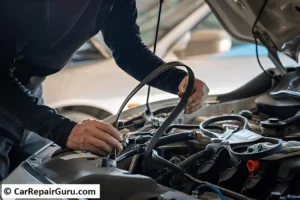
When it comes to reliable driving, belts and hoses do a lot of behind-the-scenes work. As part of your spring vehicle inspection, it’s smart to give these components a close look — especially after months of cold weather, which can cause rubber to harden, crack, or become brittle.
Pop the hood and visually inspect each belt. Look for fraying, glazing (a shiny surface), or cracks. Serpentine belts, which power everything from the alternator to the A/C, are especially critical. During an engine check, mechanics always look for tension and wear.
Hoses should be firm but flexible. If you notice bulging, soft spots, or visible leaks around the clamps, that’s a warning sign. Coolant hoses are vital for engine temperature control — a failure here could lead to overheating.
Replacing worn belts or hoses during spring ensures your car’s ready to handle the heat. It’s one of those signs your car needs a spring tune-up — and one you don’t want to ignore.
Final Touches and Seasonal Prep
As you wrap up your spring auto care, don’t forget these final checks. Test all exterior lights, including headlights, brake lights, and turn signals, to ensure safety during spring driving. Check your HVAC system for smooth airflow and cooling efficiency — you’ll want it running perfectly for those hot summer days.
Lastly, take a moment to restock your emergency kit. Refresh essentials like water, a flashlight, first-aid supplies, and any seasonal items, such as sunscreen or extra windshield washer fluid, for those upcoming road trips.
This last step of seasonal car maintenance helps keep your car in tip-top shape all year long.
Conclusion
Taking the time for proper spring car maintenance isn’t just about keeping your car clean — it’s about ensuring your vehicle stays safe, efficient, and road-ready after the long, punishing winter. From checking fluids and filters to inspecting brakes, tires, and batteries, every step you take now helps prevent costly repairs later.
Whether you’re gearing up for a family road trip or just want peace of mind on your daily commute, a thorough car spring checkup is the smartest seasonal investment you can make.
Think of it as a fresh start — for your car and your confidence behind the wheel. With this complete seasonal car maintenance guide, you’re well-equipped to hit the road this spring, knowing your vehicle is performing at its best.
FAQ
Q1: Why is spring car maintenance important?
A: Spring car maintenance helps reverse winter damage, improves safety, and ensures optimal performance for warmer weather. It also helps spot issues before summer heat causes breakdowns.
Q2: What fluids should I check during a spring tune-up?
A: Key fluids include engine oil, coolant, brake fluid, transmission fluid, and windshield washer fluid. Topping off or replacing them prevents overheating and poor performance.
Q3: How do I know when to replace my wiper blades?
A: If they streak, chatter, or miss spots, it’s time to replace them. Most experts recommend new wipers every 6–12 months, especially after a rough winter.
Q4: Can I do spring car maintenance myself?
A: Many tasks—like checking fluids, cleaning, and replacing filters or wipers—are DIY-friendly. However, for brake inspections or alignment, a professional mechanic is best.
Q5: How often should I perform seasonal car maintenance?
A: Aim for two full seasonal checkups per year—after winter and before winter. This keeps your car in top shape year-round.
